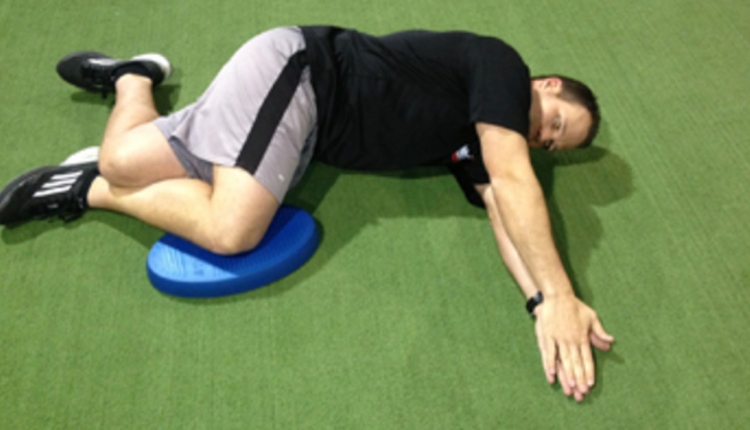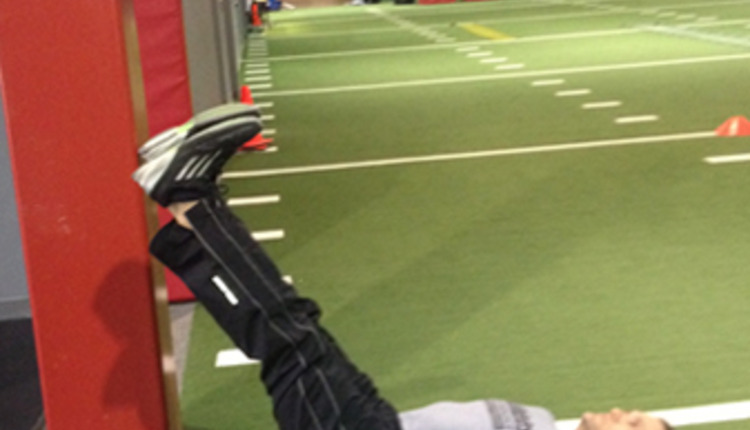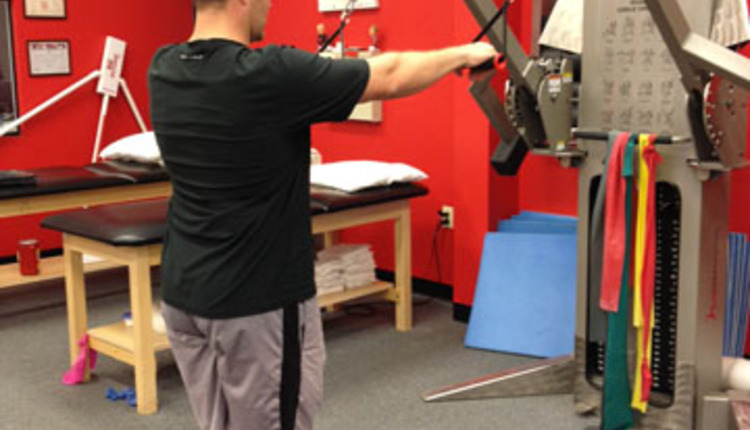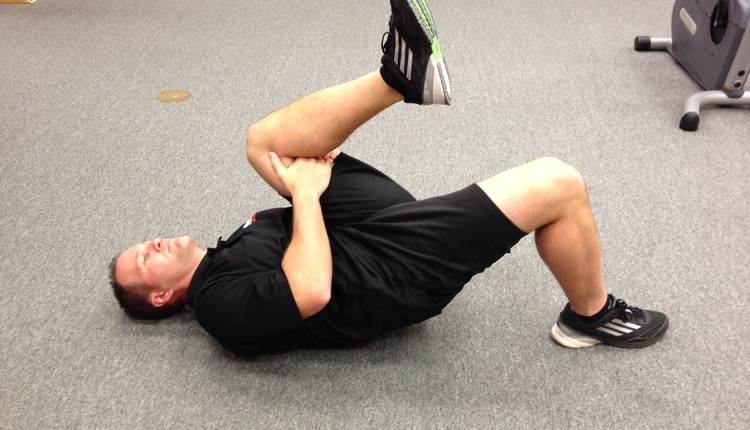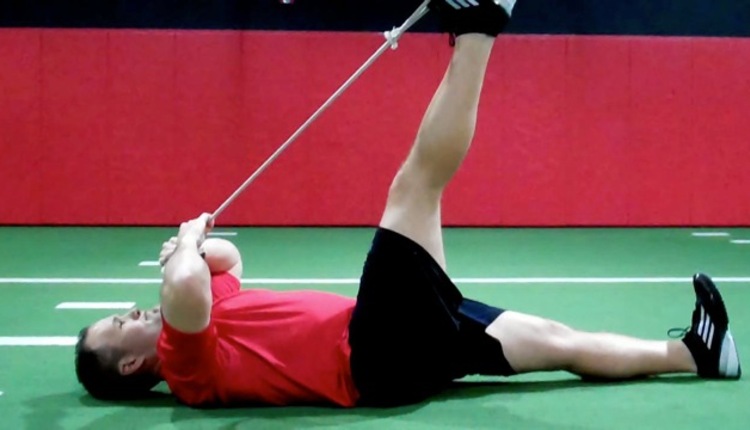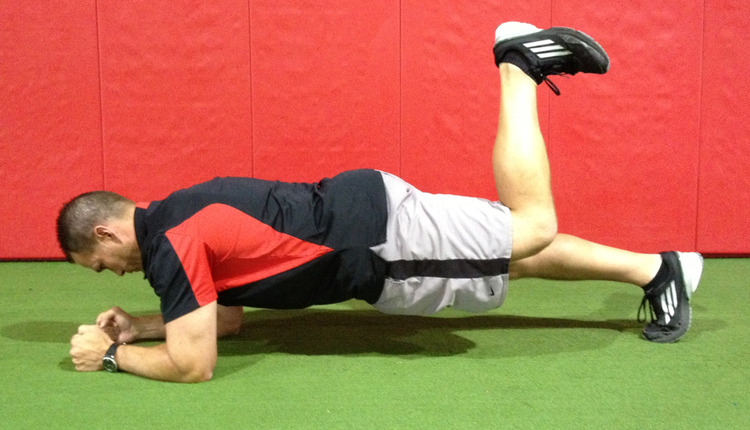BY Brian Schiff
Aug. 15 2014
Increasing hip strength and stability is a common focus in training and injury prevention programs. Current research indicates hip and knee strengthening is more effective than knee strengthening alone... View More
BY Brian Schiff
Aug. 1 2014
Using a stability ball for hamstring exercises is commonplace in fitness and rehab settings. I feel the use of isometric exercise is often under rated and under utilized because it is viewed as boring... View More
BY Brian Schiff
July 15 2014
It is common to see scapular and rotator cuff dysfunction in clients. Repetitive overhead motion and certain lifts and exercises can expose the shoulder to increased strain, and muscle imbalances may further... View More
BY Brian Schiff
July 1 2014
Many people display limited thoracic spine rotation. Often, they have asymmetries based on their chosen sport or recreational activity. For rotational activities such as throwing, swimming, tennis, volleyball,... View More
BY Brian Schiff
June 15 2014
In the prior two columns, I addressed gluteal activation and overcoming TFL dominance to maximize mechanics. This exercise adds a single-leg component with external load to train the hips, core and lower... View More
BY Brian Schiff
June 1 2014
In my last column, I talked about foam rolling the TFL and how it can be synergistically dominant over the gluteus medius. This exercise addresses how to activate the gluteal muscles prior to engaging... View More
BY Brian Schiff
May 1 2014
Overhead athletes of all ages and abilities struggle with postural stability and kinetic chain energy leaks. Unfortunately, asymmetrical loading often creates unavoidable imbalances and movement compensations.... View More
BY Brian Schiff
April 15 2014
Many athletes and clients struggle with hamstring muscle activation. A normal quad to hamstring ratio would be 3:2, but studies often find that subjects tend to be closer to 2:1 (especially females). This... View More
BY Brian Schiff
April 1 2014
Training the core in multiple positions is advantageous for many reasons. I like to work in half-kneeling using various modes of resistance to improve pillar strength. This exercise covers a half-kneeling... View More
BY Brian Schiff
March 15 2014
This exercise involves a variation using an isometric RDL and upper body rowing motion. Single-leg stability and trunk control is an integral part of optimal sport performance and running. More importantly,... View More
BY Brian Schiff
March 1 2014
I utilize the single leg Romanian deadlifts (RDL) in my dynamic movement prep routines, lower extremity rehab and as part of performance training. It can be effectively used to increase mobility, stability,... View More
BY Brian Schiff
Feb. 15 2014
The shoulder mobility screen in the FMS often reveals side-to-side asymmetries. It is more common to see hypermobility in female clientele, while their male counterparts exhibit more hypomobility. Overhead... View More
BY Brian Schiff
Feb. 1 2014
The active straight leg raise (ASLR) assessment (as part of the FMS) is an essential part of any assessment I do on my athletes and runners. It provides a great look at a client's ability to stabilize... View More
BY Brian Schiff
Jan. 15 2014
The next 3-4 columns will focus on the 10 in one Platform Trainer by TAG Fitness. This exercise demonstrates how to increase upper body pulling strength in a suspended fashion. The design of this equipment... View More
BY Brian Schiff
Jan. 1 2014
The hurdle step assessment (as part of the FMS) is designed to challenge the body's proper stepping and stride mechanics as well as stability & control in single leg stance. The step leg must perform ankle... View More
BY Brian Schiff
Dec. 15 2013
The in-line lunge allows for the observer to pick on flawsor asymmetry by placing the body in a narrow stance with a wide stride toassess hip, knee, ankle and foot mobility and stability of the client.... View More
BY Brian Schiff
Dec. 1 2013
There is a lot of focus on movement in rehab and training circles these days. I believe that as a very good thing and routinely incorporate the FMS in my programming as part of my client movement assessments.... View More
BY Brian Schiff
Nov. 15 2013
Hamstring flexibility is often lacking in many clients, especially adolescent males and runners. While there is often soft tissue tightness present, limited hip flexormobility also contributes to the often... View More
BY Brian Schiff
Nov. 1 2013
All effective prehab and rehab programs for athletes should build in single leg stability exercises. I like to use sliding exercises as one way to improve neuromuscular control of the core, hip and knee.... View More
BY Brian Schiff
Oct. 15 2013
It is always preferable to include exercises that activatethe gluteus maximus and medius in training programs. Research has shown that poor hipactivation/control leads to frontal plane knee collapse and... View More











